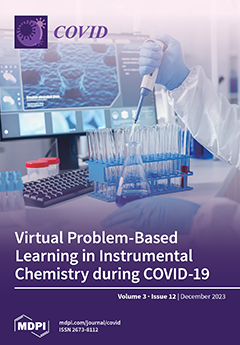The COVID-19 pandemic significantly disrupted global healthcare systems. The impacts of SARS-CoV-2 infection on urticaria and its management are unknown. This study aimed to collect information about patients with urticaria infected with SARS-CoV-2 and to investigate the impact of SARS-CoV-2 infection on urticaria severity, course, and treatment to better support recovery. This was a questionnaire-based study of patients with urticaria infected with SARS-CoV-2. Changes in urticaria severity (measured with the urticaria activity score (UAS)), course, and treatment were assessed before, during, and after SARS-CoV-2 infection. The mean (±SD) UAS scores were 5.17 ± 1.67, 4.23 ± 1.98, and 4.37 ± 1.93 before, during, and after SARS-CoV-2 infection, respectively (F = 8.839,
p < 0.01). The median (IQR) wheal score was 0.464 (0.464, 0.763), 0.464 (0.138, 0.763), and 0.464 (0.138, 0.763) before, during, and after infection, respectively (Kruskal–Wallis H-test, H = 12.230,
p = 0.02). The median (IQR) pruritus score was 0.695 (0.395, 0.695), 0.394 (0.123, 0.695), and 0.394 (0.123, 0.695) before, during, and after infection, respectively (Kruskal–Wallis H-test, H = 21.001,
p < 0.01). Within the limitations of a questionnaire study, urticaria appears to improve during SARS-CoV-2 infection and worsens slightly after recovery, and the frequency of Western medicine use increases.
Full article



